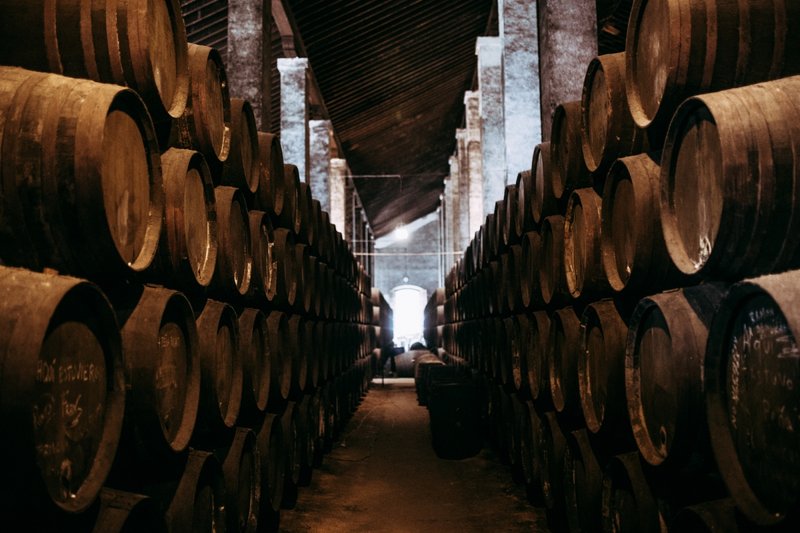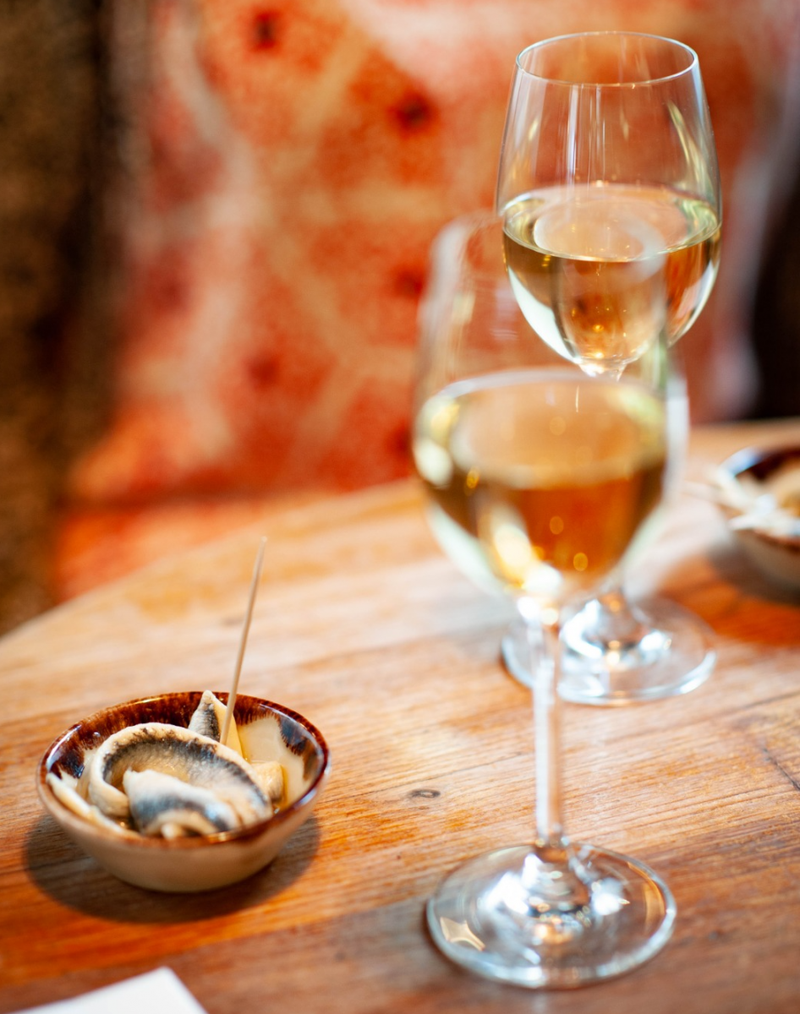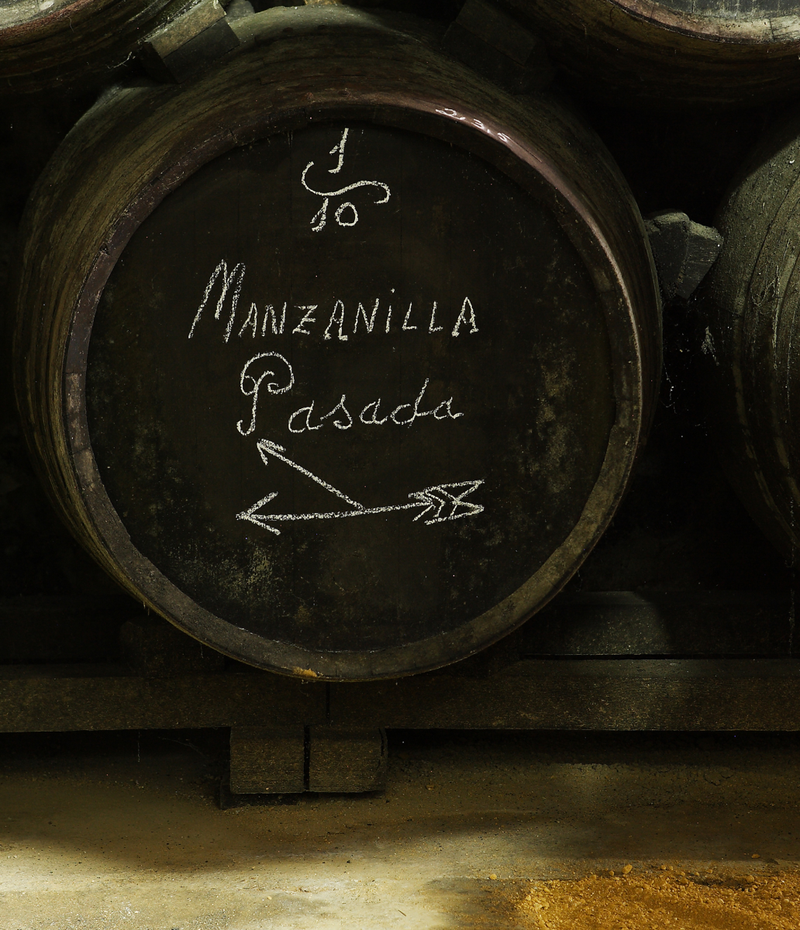All these circumstances have brought about – through a process which has lasted centuries and which has benefited from the biological continuity guaranteed by the solera system (or class system here) – the configuration of very specific combinations of yeast inside the butts, which are specially adapted to these micro-climatic circumstances. Additionally, thanks to this especially benign environment, the flor is metabolically active for most of the year.
The intense interaction between the layer of flor and the wine itself results in marked sensory characteristics: a particularly floral nose (aromas of chamomile), a light structure on the mouth, with intense salty notes and an elegant bitterness.
Along with years of ageing, the increased biological activity in Manzanilla sherries tends to reduce the dry extract in larger measure than in the case of Jerez or El Puerto wines. However no relevant analytical parameter exists – or at least has yet been discovered – which allows wines to be clearly and definitively distinguished from each other.

Inside Bodegas Hidalgo La Gitana, Sanlúcar de Barrameda.
The origin of the differences in character between Manzanilla and the other biologically aged wines in Jerez and El Puerto – finos – lies in the interior of the sanluqueño bodegas. In past times, the prime material of Manzanilla was also largely from Sanlúcar, coming from pagos (areas of vineyards sharing similar microclimatic and soil characteristics) located close to the sea, such as Miraflores, Mahina, Hormillo and Carrascal. These distinguishing soil and climate conditions of these pagos are naturally transferred to the wines.
However these days, neither the specifications nor the practices of the main bodegas guarantee that the base wines used to make Manzanilla are made exclusively from grapes grown in sanluqueño pagos.
The fruit which is made into this wine could come from any of the producing bodegas located within the Production Zone. But rather than the grapes, it is specifically the process of ageing and blending in bodegas situated in Sanlúcar that marks out the wines with their specific character, justifying the existence of the D.O. “Manzanilla-Sanlúcar de Barrameda”.

You often hear references to the “softer” character of Manzanillas as compared with finos. Indeed, novices are often convinced – erroneously – that sanluqueño wine has a lower alcoholic content. As we’ve seen, the production process of Manzanilla is identical to that of fino (although it would be more correct to say the exact opposite, that fino is made the same way as Manzanilla) and therefore has an alcohol content of around 15%.
On the other hand, the organoleptic intensity of a biologically aged wine is directly linked to the base wines which supply the “class system”, and to the age of the final Manzanilla itself.
Different types of Manzanilla
Unfortunately, at the end of last century, Sevillano fashion dictated that Manzanilla should be extremely pale-coloured and light-bodied, characteristics which were often achieved using the unhappy method of filtering with activated charcoal.
Manzanillas that had been aged for three years or more, and which therefore possessed wonderful colour, aroma and taste when drawn from the cask, were modified unnaturally to offer the market a false sense of lightness and freshness, disguised by pallidity, which was in reality simple nakedness. Can you imagine anything more ridiculous? Thankfully, this taste for insipidity is gradually disappearing, and the public is demanding more and more authentic versions of different Manzanillas.
Hence the more full-bodied en rama (unfiltered) versions, and richer Manzanilla pasadas, which are aged for longer - six or more years. The specifications do not set a minimum period of ageing to distinguish between Manzanilla fina and Manzanilla pasada, so the use of these terms on the label is at each bodega’s discretion.
Having said that, the concept of Manzanilla pasada is linked to a sufficiently long ageing period to ensure that the layer of flor in the butts can no longer protect the wine completely from contact with oxygen in the air.
This “old flor” is unable to stop the Manzanilla from being micro-oxidated: the colour darkens and it evolves into a more complex wine, starting on the journey – which takes several more years - towards becoming an amontillado.

Manzanilla pasada bota, Bodegas Urium. Photo: Rocio Urium.
Today, Manzanilla is going through an exciting time, and has the brightest future of all the traditional Marco de Jerez wines. Thanks to the denaturalisation practices referred to earlier being gradually abandoned, and the wine-loving public’s discovery of its extraordinary enological qualities, as well as ample gastronomic pairing possibilities, the sanluqueño wine can look forward to a bright future.
In fact, Manzanilla is the best-selling wine of those made under the auspices of the Regulatory Council. This upward trend for sanluqueño wine – strongly based on the Spanish market – is supported by local and regional consumers, largely through inns and bars, encouraging the connection between people and their wine, thereby facilitating easier access to wine tourism, as well as attracting younger consumers.
Manzanilla is a wine with a definitely authentic image and its own personality, inextricably linked to its home. More than any other, Manzanilla is its own people’s wine, the wine of Sanlucar.




